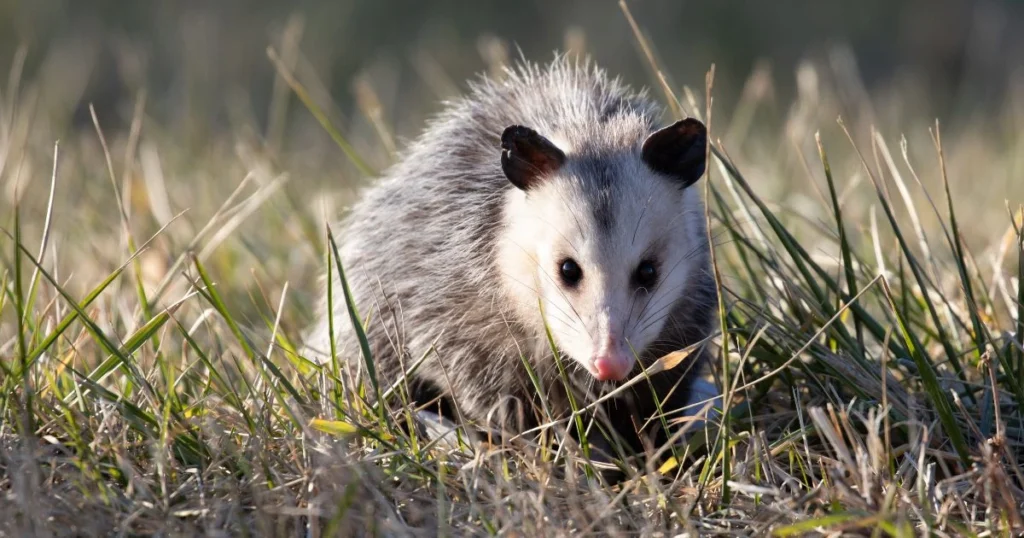
Opossums are fascinating nocturnal marsupials that often wander into yards, gardens, or wooded areas for food and shelter. While they don’t typically dig their own burrows, opossum holes can signify their activity when they repurpose existing burrows, tunnels, or other ground cavities. Understanding the presence of these holes, their impact, and the best strategies for managing opossums on your property is key to maintaining a safe and peaceful outdoor space.

Opossums are not natural burrowers like moles or groundhogs but opportunistic animals that adapt to their surroundings. Instead of digging their own shelters, they often use existing holes or burrows created by other animals. These holes are then modified to suit their temporary resting spot or nesting site needs.
Identifying opossum holes can help distinguish their activity from that of other animals, such as groundhogs, rabbits, or skunks. Observing specific signs around these holes can also indicate whether opossums use them.

Opossums use holes for various practical reasons. Their primary motivations include safety, shelter, and access to food sources.
Holes provide a safe, enclosed space for opossums to hide from predators such as foxes, coyotes, or dogs. These shelters also protect them from harsh weather conditions like rain, snow, and extreme temperatures.
Female opossums often seek out secure holes or burrows to give birth and nurse their young. A quiet, hidden space is ideal for protecting their offspring from external threats.
Opossums often choose burrows near food-rich areas, such as gardens, compost piles, or garbage bins. Their opportunistic feeding habits make convenience a priority when selecting a shelter.
The presence of opossum holes on your property is not always harmful, but it can become a concern in certain circumstances.

Managing opossum holes humanely and effectively is important for your property’s safety and the welfare of the animals. Below are practical steps to address this issue.
Begin by inspecting your yard for potential opossum holes and signs of activity. Monitor these areas at night when opossums are most active to confirm their presence.
Removing food attractants is one of the most effective ways to discourage opossums from settling in your yard.
Prevent opossums from accessing certain areas by sealing entry points with durable materials.
Applying deterrents around known opossum holes can discourage their return.
If opossums have already established a den in your yard, consider hiring a professional wildlife removal service to safely and humanely relocate them.

Once you’ve addressed existing opossum holes, taking steps to prevent them from returning is essential.
Keep your yard tidy by removing debris, overgrown vegetation, and piles of wood or leaves where opossums might hide.
Erect a sturdy fence around your property or garden to reduce access. Bury the fence several inches into the ground to prevent opossums from digging underneath.
Placing decoy predators like fake owls or snakes can discourage opossums from settling in your yard.
Despite your efforts, professional wildlife control may be necessary if opossum holes and activity persist. Experts can safely assess the situation, remove opossums, and implement exclusion techniques to protect your property.

Opossum holes, while not directly harmful in most cases, can pose challenges when they damage property or attract additional pests. Identifying and managing these holes with humane solutions is crucial for maintaining a safe and clean yard. By inspecting your property, sealing entry points, and using deterrents, you can prevent future issues and coexist peacefully with local wildlife.
Professional assistance can make all the difference for persistent problems with opossum activity. Critter Stop offers humane and effective wildlife removal services tailored to your needs. It has a fantastic reputation and customer reviews online because it provides high-quality work and great customer service. Call Critter Stop at (214) 234-2616 today for a free inspection and reliable solutions.
Opossums often use existing holes and burrows as shelters, leaving many homeowners wondering how to identify and manage these signs of activity. Understanding opossum holes and burrows can help you determine their presence, minimize damage, and take effective steps to protect your property. Below, we answer some of the most common questions about opossum holes and burrow locations and how to handle these situations humanely and efficiently.
Opossum holes are typically small, around 3-6 inches in diameter, and may be surrounded by disturbed soil or leaves, often located near wooded or sheltered areas.
Opossum burrow activity can be identified by small openings in the ground, signs of nesting materials like leaves and grass, and nearby tracks or droppings.
Opossum holes in urban areas are often found under decks, sheds, or in overgrown gardens where they can use existing burrows for shelter.
Opossum burrows are often repurposed from other animals, making them less uniform than those dug by burrowing species like groundhogs or rabbits.
If you find an opossum hole in your garden, inspect it for activity, seal it after ensuring the opossum has left, and use deterrents to prevent its return.
Opossum holes near sheds or decks can weaken foundations if the ground becomes disturbed. Sealing these entry points is crucial to avoid long-term damage.
Opossums prefer using existing burrows because they are not natural diggers. They opportunistically adapt to already dug holes for shelter and nesting.
Visit our Critter Library and learn more about our furry friends